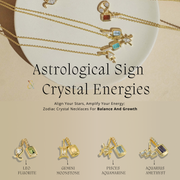Sapphire History and Symbolism
Ancient Time
The history of sapphires dates back to ancient Persian, Greek, and Roman civilizations.
The ancient Persians believed that the blue of the sky was reflected from a large sapphire, which gave sapphires sacred and celestial meanings.
In ancient Greece and Rome, sapphires were considered symbols of wisdom, truth, and nobility, and were often worn by priests and rulers to gain divine protection and insight.
Early Indian culture also incorporated sapphires into the astrological system of the Vedic scriptures, believing them to bring good luck and spiritual clarity.
Middle Ages
In medieval Europe, sapphires were considered symbols of holiness and piety, often set in bishops' rings and sacred vessels.
Wearing sapphires was said to ward off impure thoughts, dispel ill will, and even reveal the truth and prevent poisoning. They were also believed to help the wearer maintain a pure connection with God, and were therefore highly revered by the church and the nobility.
European royal families used sapphires as symbols of power and loyalty, setting them in crowns and scepters to symbolize eternal protection and wisdom.
Modern Time
During the Renaissance, sapphire's reputation continued and expanded into the arts and sciences.
Alchemists and natural philosophers believed sapphire not only elevated the spirit but also cured eye ailments, calmed mania, and harmonized emotions.
Some accounts even attributed it the ability to detect lies and foresee the future. Although science gradually replaced mysticism, sapphire remained a symbol of nobility and purity, retaining its place among the nobility and elite.
Symbolism
In modern times, sapphire has become the September birthstone and the 45th wedding anniversary stone, symbolizing fidelity, sincerity, and undying love.
It continues to be associated with wisdom, spiritual clarity, and protection, and is prized in fine jewelry for its durability and brilliant color.
In popular culture and fashion, sapphire is often used to convey dignity and elegance, continuing its deep connection to royalty and the divine that has existed for thousands of years.
Where are Sapphire found?

Myanmar is one of the most famous sapphire sources, particularly the Mogok region, renowned for its rich, translucent "royal blue." Sri Lanka is known for its diverse color palette and consistent quality, producing sapphires in shades ranging from light blue to pink and yellow-green.
Madagascar has become a significant supplier in recent decades, boasting abundant production and a wide range of colors, with quality comparable to that of traditional sources. Thailand and Cambodia primarily produce dark-colored sapphires and are important processing and trading centers in Asia.
Sapphire mines also exist in Australia and Montana, USA. The former produces predominantly deep blue, while the latter is prized for its distinctive light blue to green hues. These diverse production areas collectively constitute the global sapphire supply chain.
What color is Sapphire?

Sapphire's most well-known color is blue, ranging from light sky blue to deep royal blue, with "royal blue" being prized for its rich, even hue.
However, sapphires aren't limited to blue; they can appear across nearly the entire rainbow spectrum, including pink, yellow, green, violet, orange, and even colorless. These non-blue sapphires are often referred to as "fancy sapphires," while red sapphires are classified as rubies because they and sapphires are derived from the same mineral, corundum.
Sapphire's color comes from trace element differences in its crystal structure. For example, blue is primarily caused by the presence of iron and titanium; chromium creates pink and orange colors; and higher iron levels can produce yellow or green hues. Some sapphires also exhibit a color-change effect, shifting color from blue to violet under different lighting sources.
Furthermore, there's the rare "padparadscha sapphire," a blend of pink and orange, reminiscent of a lotus or sunset. It's extremely rare and highly valuable. The beauty of sapphires lies not only in the purity and saturation of a single color, but also in the variations in hue and unique brilliance they present.
Types of Sapphire
Blue Sapphire

Blue Sapphire is the most recognized and prized type of gemstone, with hues ranging from light sky blue to deep royal blue. The finest sapphires are often called "cornflower blue" or "sapphire blue" and are renowned for their vibrant saturation and velvety texture.
This color primarily originates from trace amounts of titanium and iron in corundum crystals.
Primary sources include Sri Lanka, Myanmar, and Kashmir, the latter producing sapphires with a legendary velvety blue luster and exceptional rarity.
Sapphires are often heat-treated to enhance clarity and color, but untreated stones can be intensely colored and command high prices.
Pink Sapphire

Pink sapphires range in color from a soft pale pink to a rich magenta, with chromium being the primary colorant. The darker the pink, the higher the chromium content.
Sapphires that are closer to red are classified as rubies, though the distinction between the two can be subtle and depends on market conditions.
These sapphires are prized by jewelry enthusiasts for their romantic and feminine allure, and vibrant pink sapphires are particularly rare and valuable.
Primary sources include Sri Lanka, Madagascar, and Myanmar, with Madagascar producing the most vibrant sapphires in recent years.
Yellow Sapphire

Yellow sapphire ranges in color from pale lemon yellow to golden yellow, often due to trace amounts of iron.
Gold and canary yellow are the most sought-after colors, often associated with warmth, optimism, and prosperity in various cultures, particularly in Vedic astrology.
Heat treatment is often used to enhance saturation, but some gems achieve their golden hues from natural color zoning.
The finest yellow sapphires are mined in Sri Lanka, but significant deposits have also been found in Thailand and Madagascar.
Padparadscha Sapphire

The padparadscha sapphire is one of the rarest and most coveted gemstones. The word "padparadscha" derives from the Sinhalese word for "lotus," and its unique blend of pink and orange hues evokes a blooming lotus or a tropical sunset.
This delicate balance of tones is extremely rare in natural gemstones, making genuine padparadscha sapphires highly valuable. Most padparadscha sapphires are mined in Sri Lanka, with smaller quantities found in Madagascar and Tanzania.
Stones with excessive pink or orange hues may be reclassified as other sapphire categories, so genuine padparadscha sapphires are strictly judged.
Green Sapphire

Green sapphires are less common and often feature a subtle blend of blue and yellow, ranging in hue from olive green to deep forest green.
This color is due to iron in the crystal lattice, and many stones exhibit pleochroism, displaying different colors depending on the angle.
Although lesser-known, green sapphires are increasingly sought after for their unpretentious, natural appearance. Their exceptional hardness and durability make them a unique alternative to emeralds.
Australia, Sri Lanka, and Madagascar are important sources.
White Sapphire

White sapphires are pure, colorless corundum, prized for their brilliant brilliance and clarity.
Because of their affordability and hardness, they are often chosen as diamond alternatives, although they generally lack the same fire.
Its transparency makes it ideal for a variety of jewelry, and it can be cut into nearly any shape.
Most white sapphires are mined in Sri Lanka, Myanmar, and Madagascar, and many are heat-treated to enhance clarity.
Purple Sapphires

Purple sapphires, also known as violet sapphires, range in color from pale purple to deep purplish-red.
Their hue is often due to trace amounts of vanadium or chromium, and they exhibit dramatic color shifts under varying lighting, sometimes appearing reddish-purple under incandescent light.
These sapphires are relatively rare and highly sought after for unique and noble gemstone hues.
Sapphires from Madagascar and Sri Lanka are particularly striking.
Star Sapphires

Star sapphires are a special variety that exhibit a star-like phenomenon known as asterism, created by six or twelve-ray patterns reflected from rutile needle-like inclusions.
This optical effect is best seen in direct light and is most noticeable in cabochon-cut gems. Star sapphires come in a variety of colors, with blue, pink, and black being the most common.
High-quality star sapphires, especially those with a sharp star, a stable center, and rich body color, are extremely valuable.








